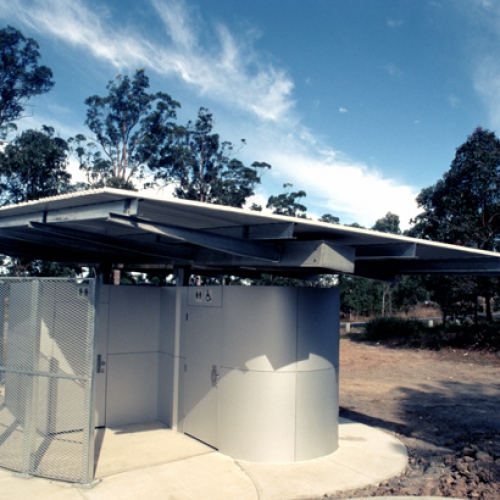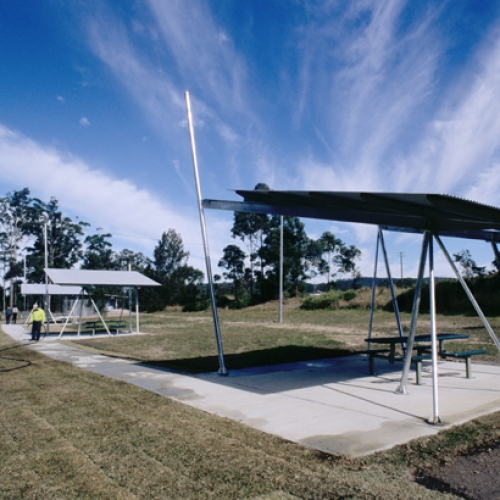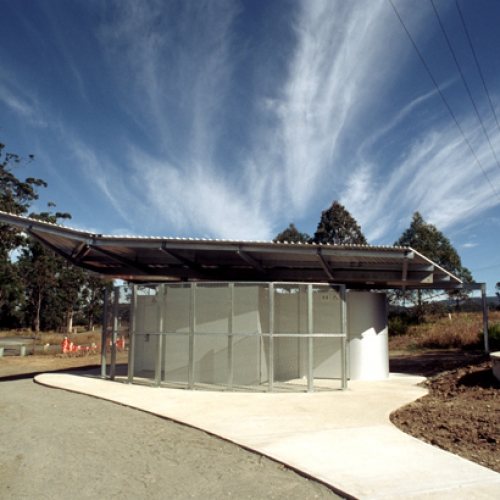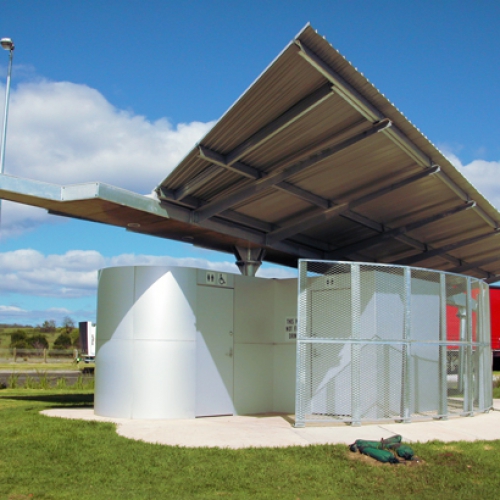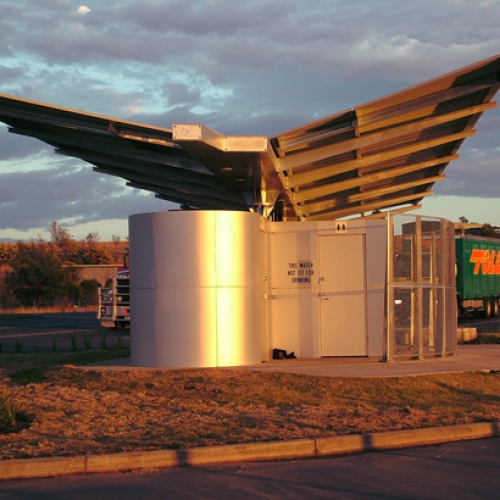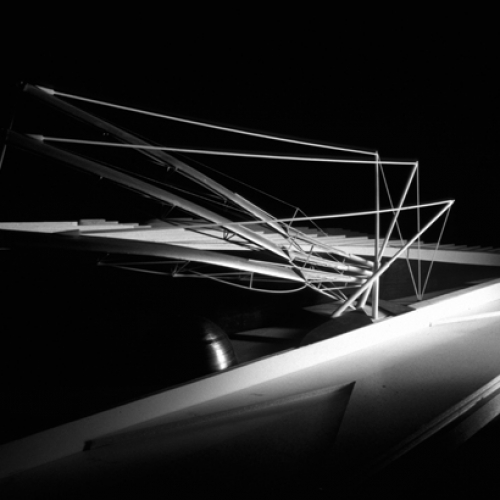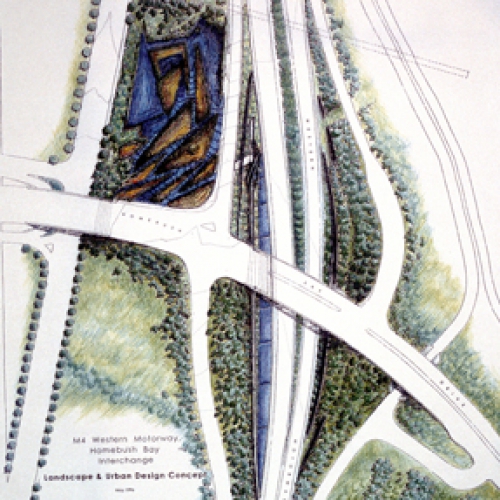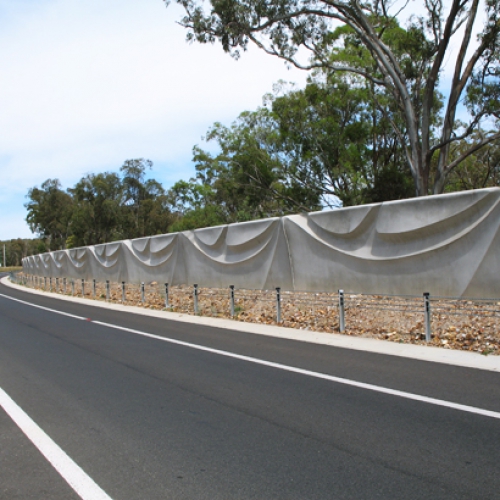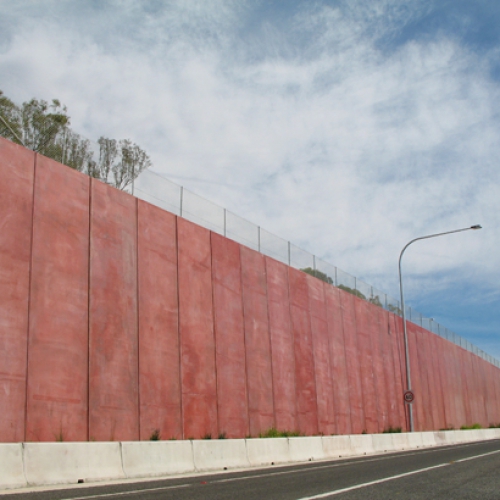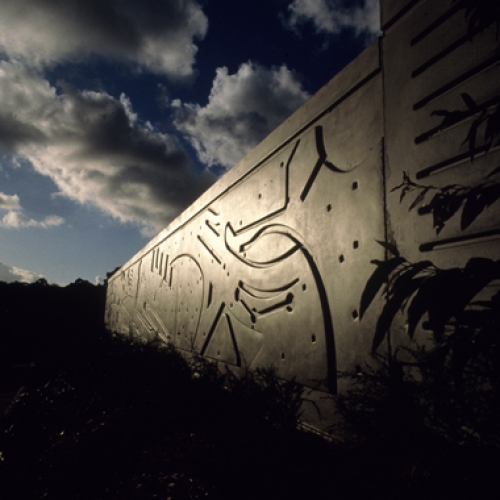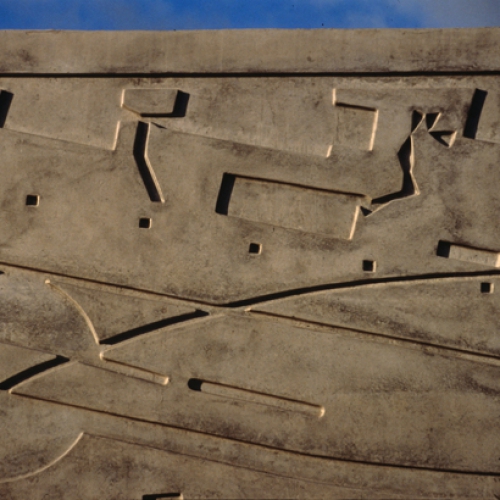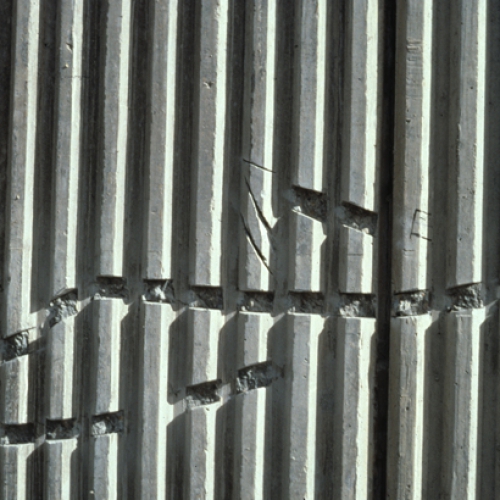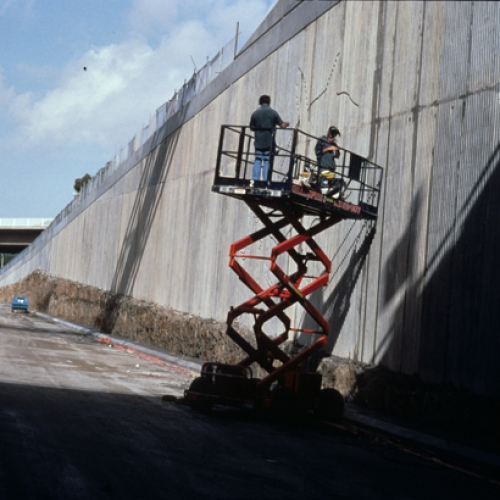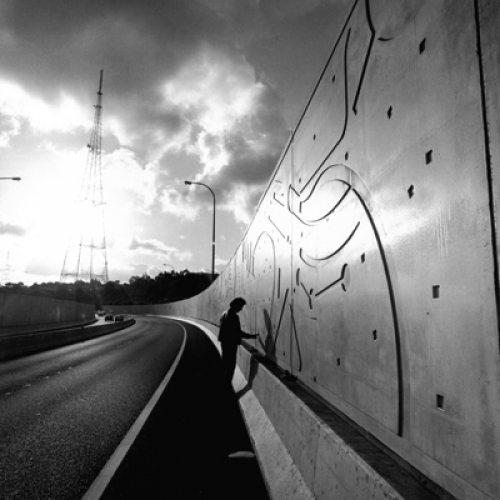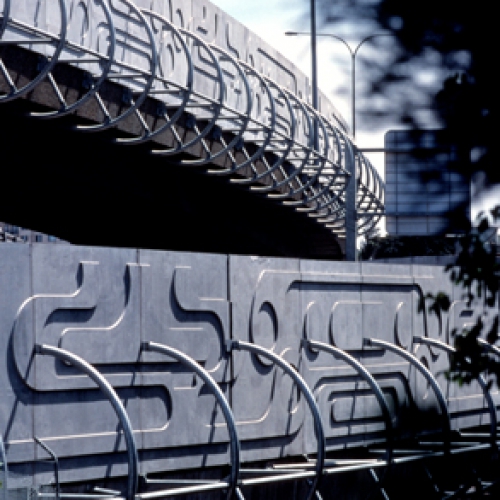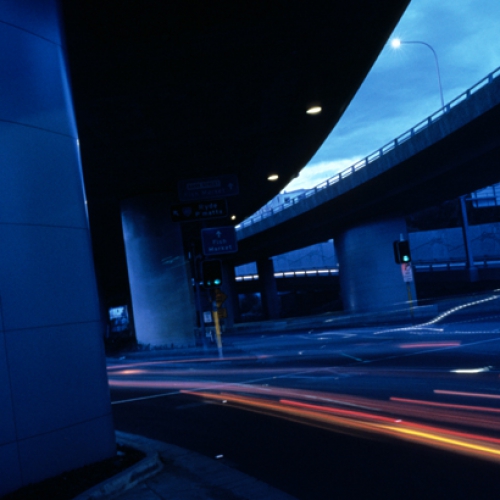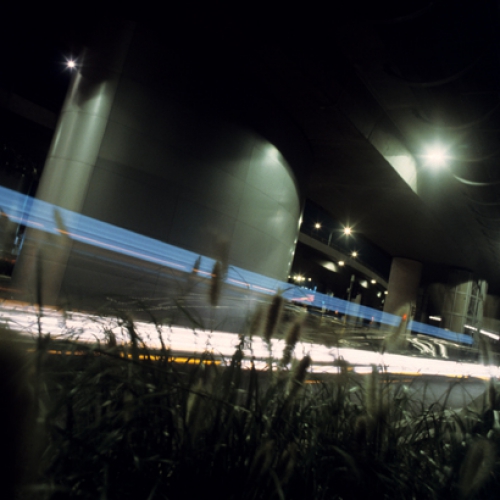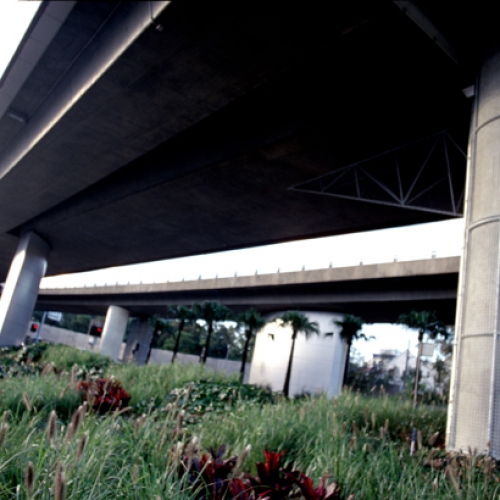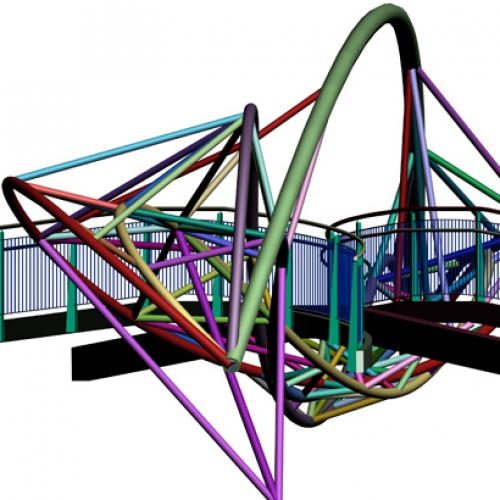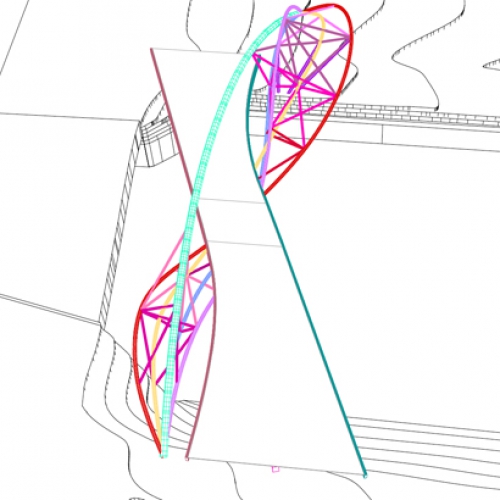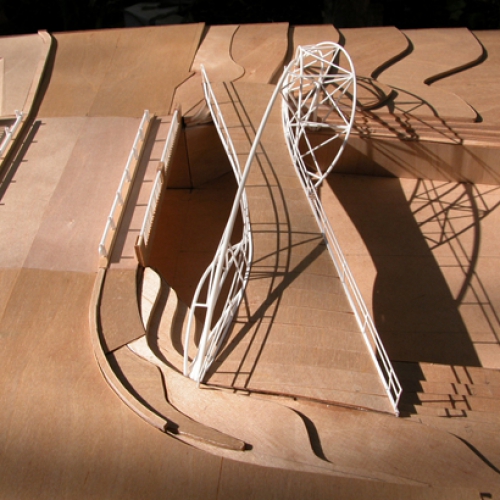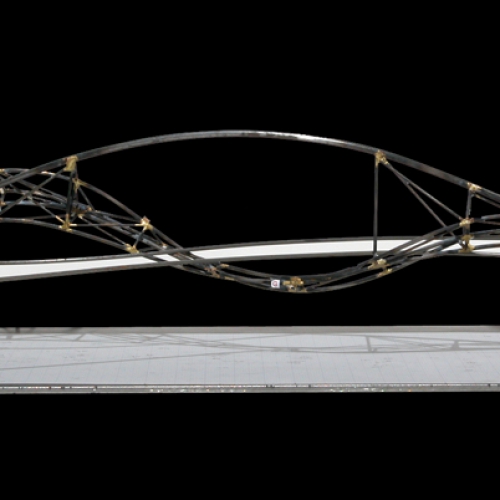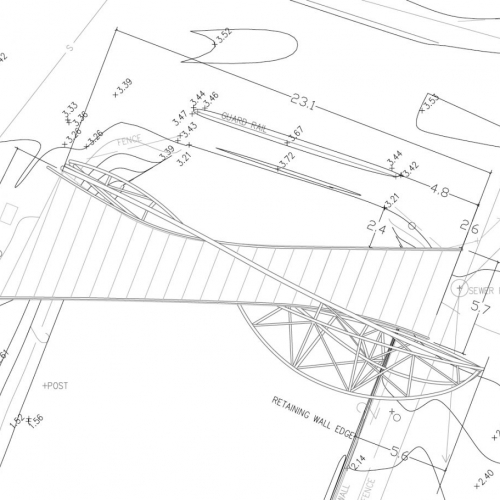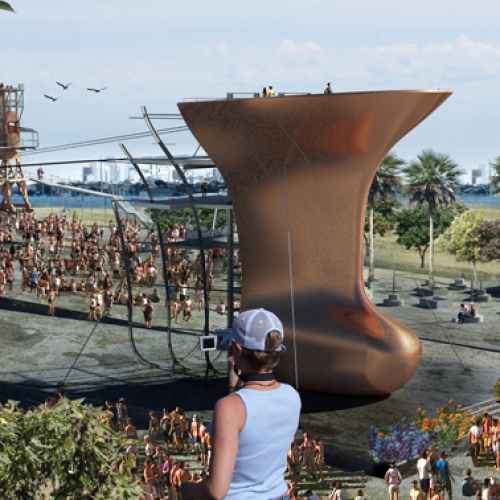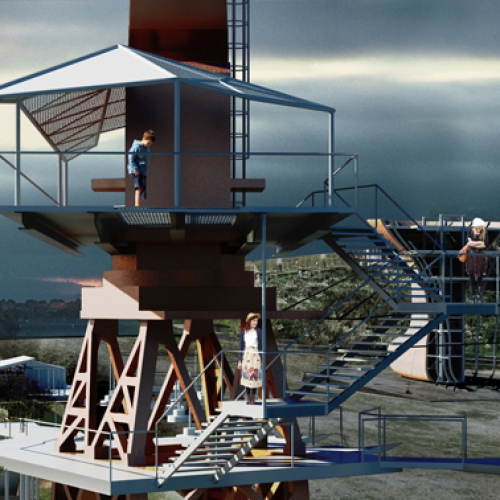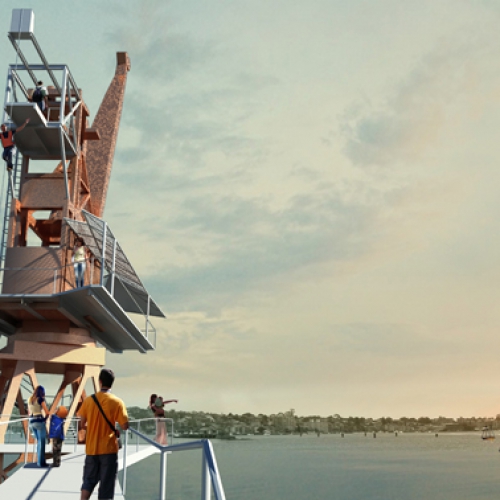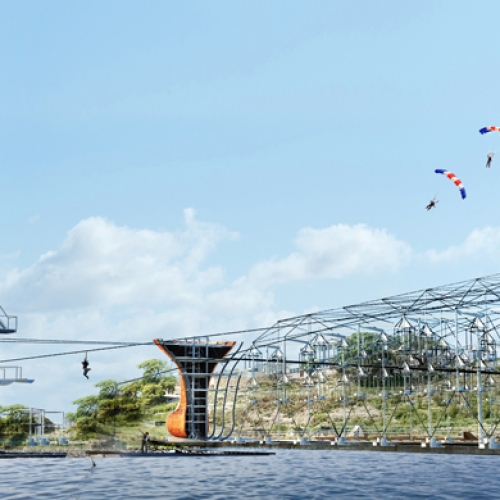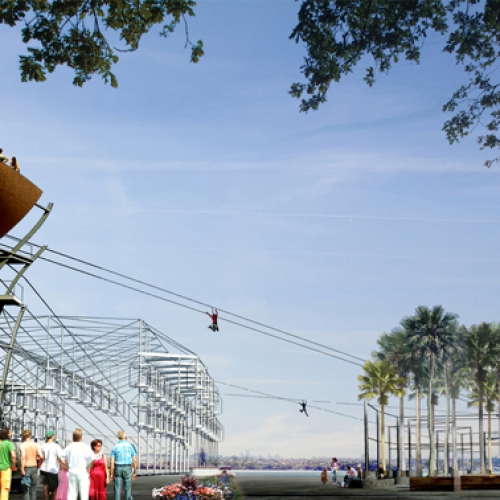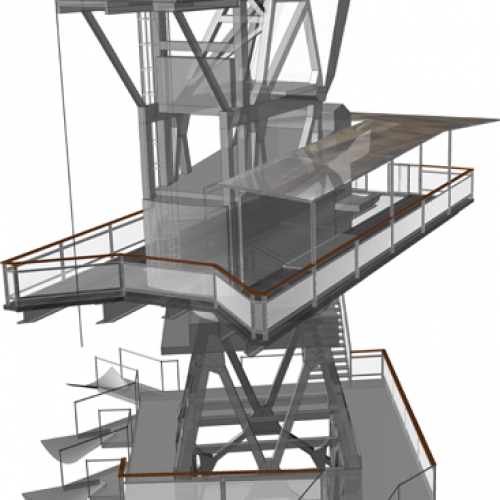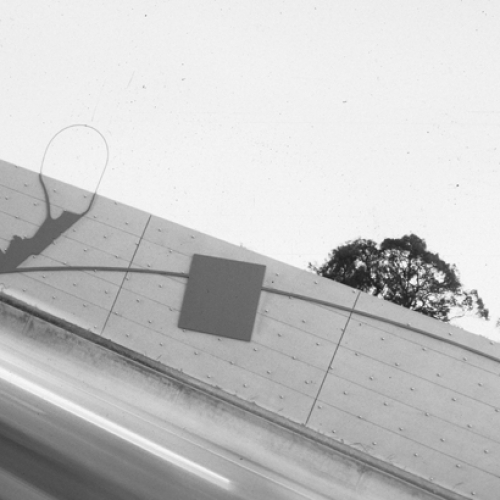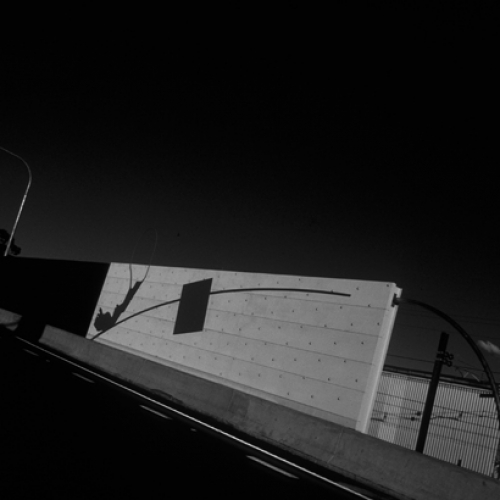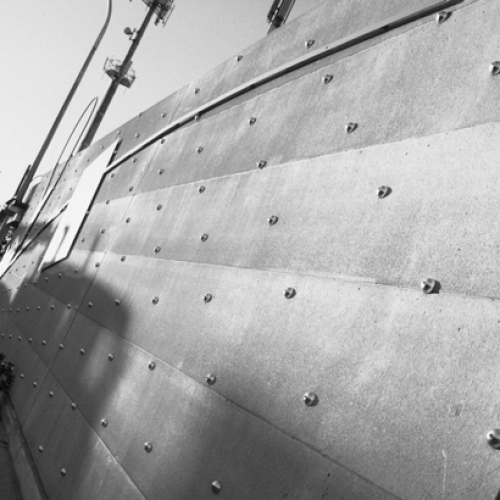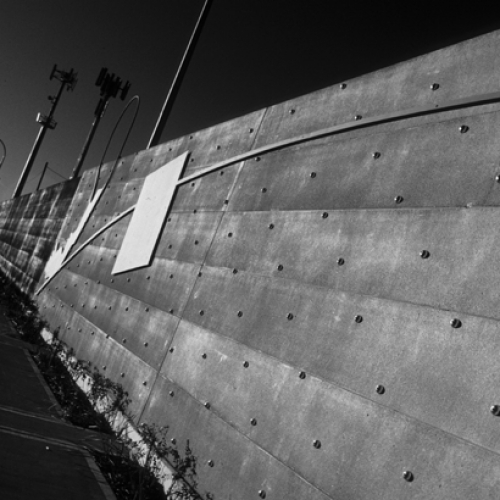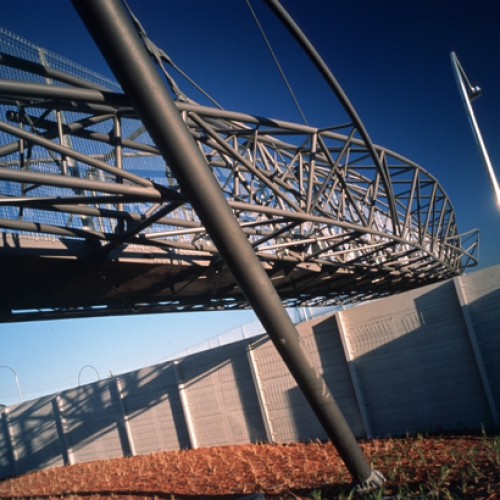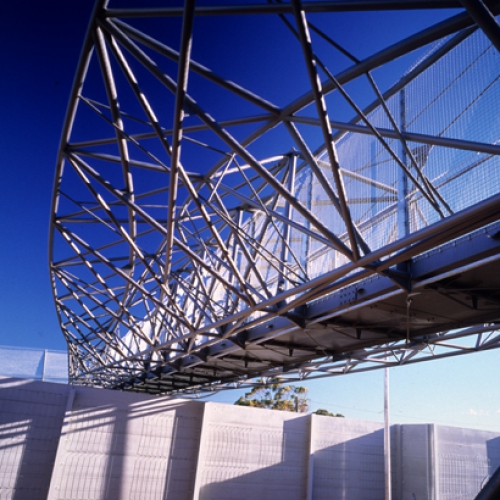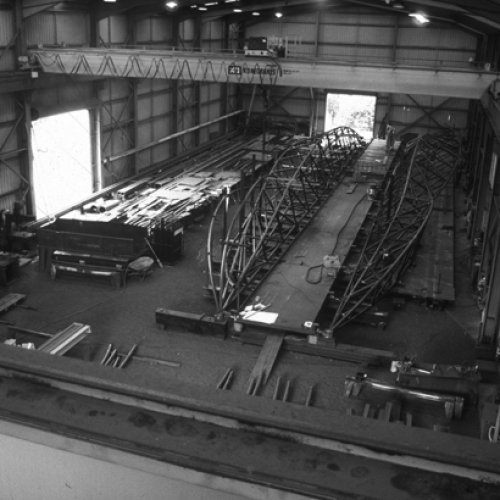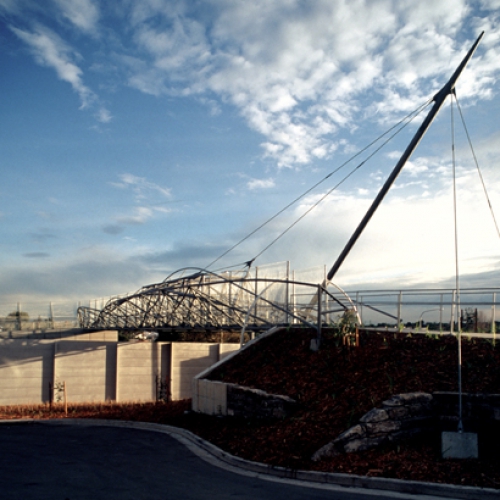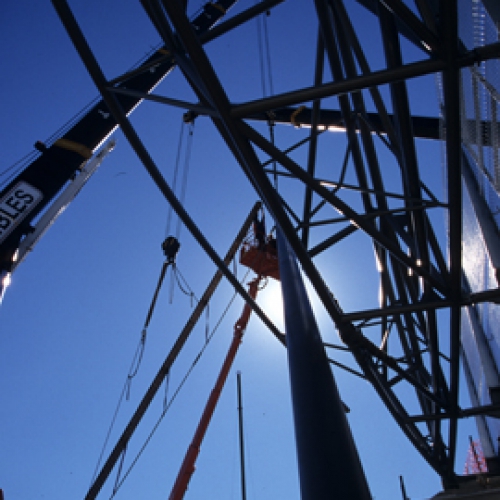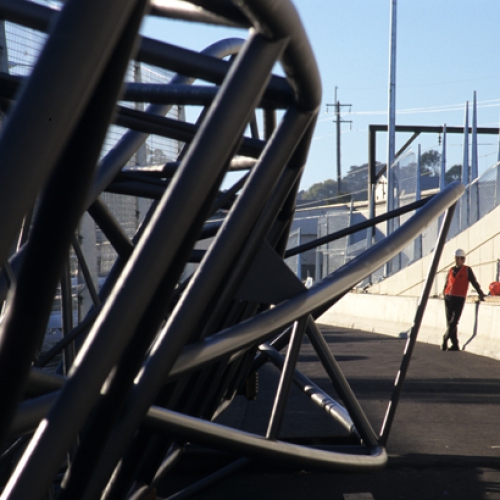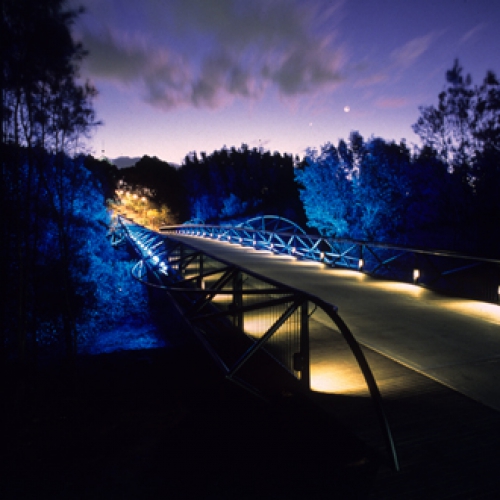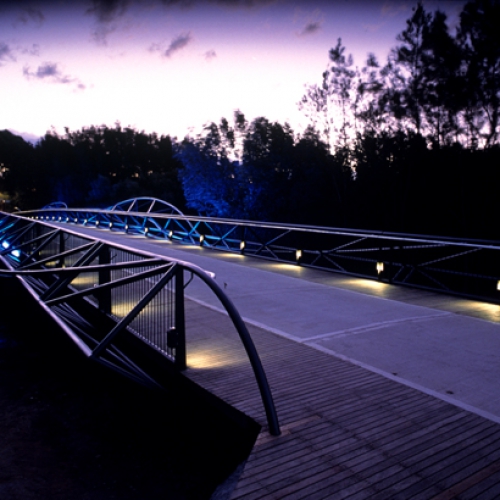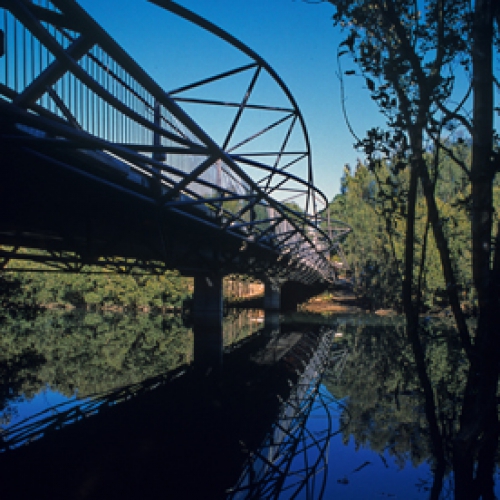2005, NSW
The RG Rest Area Toilets reflect the commitment of the RTA to design in the field of road amenity. In developing RG Rest Area Toilets it was considered important that they be sophisticated and well-designed to reflect the journey of the motorist. This is a contrast with the vernacular architecture in the landscape such as the rustic shed. Instead the RG Toilets are more akin to car design and relate to landscape in a more conspicuous manner, engaging their function and place within the road system.Month: April 2017
2007
The sound walls form an integral part of the architecture of the road and place of Canberra. The design of Canberra owes its form and mystery to Walter Burley Grif?n and Marion Mahony. Hidden within the interlocking curved and triangular geometry of Grif?n’s designs lie anthroposophical and philosophical meanings. Richard Goodwin has chosen to incorporate an interpretation of one of Grif?n’s most intriguing patterns into the pre-cast concrete sound wall panels.Grif?n believed, as Richard does, that concrete re?ects the mechanical means of its production coupled with unique plastic qualities, which allow for patterning.
The net effect is to pay homage to Grif?n while at the same time creating new work which speaks of the mystery of Canberra as a place.
Theme: Walter Burley Grif?n.
Site: These walls are situated adjacent to the Australian Institute of Sport.
Form: An abstracted and enlarged interpretation of one of Walter Burley Grif? n’s concrete tile designs.
Materials: Precast Concrete panels.
Scale: Panels ranging from 2mh to 4mh x 7m long.
1992
For the Gore Hill Freeway, after two years of development Goodwin chose a design language in 3 parts. Firstly, concrete noise walls were utilised on a large scale. The surface of the concrete pioneered the use of bas-relief motifs. These repeating forms were an abstraction of this particular freeway in plan. The result is a rhythmic signature particular to Gore Hill. As the road becomes viaduct the walls change to lightweight versions supported by distinctive sculptural supports.Secondly, historical reference was made to the architect Walter Burley Grif? n’s Incinerator building, via the use of one of his tile designs. The Grif?n Incinerator Building is located adjacent to the Freeway. Goodwin sourced the tile from the now demolished Pyrmont Incinerator and developed new moulds.
The third arm of the art/architecture language was the inclusion of Aboriginal rock engravings chipped into the ribbed retaining walls. These locally sourced and recorded images were chosen for their bold whale and shark forms. In one case the engraving was drawn from records as it is now destroyed. The others were recorded onto plastic on site. Positioned as they are at the gateways to the road they reinforce the idea of a distinct body or place with entrances and exits.
Of primary importance is the notion of the walls being perceived as a uni? ed whole – a synthesis of wall architecture, and motifs.
1993-96
Glebe Island Arterial Streetscape represents a milestone in collaborative design, which rethinks the leftover spaces beneath freeways. The site lies beneath the approach freeway to the Anzac Bridge and forms a separation between historic Pyrmont and the working waterfront with ? sh-markets. The needs of pedestrians, cars and light-rail required to be met via a new approach to road architecture.The team included Conybeare Morrison and Associates, Context Landscape Architects and Richard Goodwin P/L Art and Architecture. During a six year design process the original road designs were changed to encompass a new pedestrian vision for this foreshore zone complete with sculptural installation by Richard Goodwin. The inclusion of such a permanent vision for a new “road architecture” was a first for the NSW Roads and Traffic Authority.
“I developed the sculptural component as a way of engaging the architecture of the freeway via prosthetic shapes attached to the forest of columns. The combination of aluminium wings, stone finished turrets and growing frames create a “pin-ball” machine of prosthetic devices which mediate between the pedestrian and the car to facilitate an increase in the permeability of the space.”
1999
steel
50m x 12m x 20m1999
Leichhardt, SydneyThe Charles Street Bridge design is a unique opportunity to punctuate the journey between Black Wattle Bay and Five Dock with a sculptural structure. Richard Goodwin has designed an 40m suspension bridge, which is enhanced by the use of fluid form curvilinear surrounding trusses. The net effect is a sinewy arm with a distinctive asymmetrically quality. It could become a defining marker on the journey west. It also serves as an indicator to the public that the freeway can be the location of design excellence. The client was the RTA.
ARTIST’S STATEMENT: I have chosen to move the site of public art from the spaces between buildings to the very skin of architecture. The works operate as a means of transfer between the public and private. Architecture is the armature for public art which has function. Similarly the project of art in relation to freeways is the art of attachment. The prosthetic forms under the freeway at Pyrmont are one example of my work in this territory as are the sound wall projects. On a more ambitious level I have chosen the bridge as a site for the sculpture of attachment – in this case to the architecture of the freeway. The Charles Street Pedestrian Bridge is a unique opportunity to create a one off artwork with a particular and necessary urban function. The structure comprises the principals of suspension and cantilever. Its drama is accentuated by the use of flowing organic curves and intersecting truss lines.
Steel
50m x 12m x 20m
Leichhardt, Sydney
2000
Olympic Park, Sydney
This project is an elaborate skeletal sculpture which has been attached to the to the existing bridge. Bicentennial Park Pedestrian bridge forms a 70m long link between Bicentennial Park and the Olympic Stadiums. The parasite structure forms two new attachments to a smaller existing bridge. It was completed for the Olympic Games in 2000.
The concept for the bridge drew on the energy of the writhing mangroves the parasite bridge attachments transform the existing structure into a new bridge form. Thus public art performs the function of re-inventing and transforming an existing structure. The flowing curved trusses accentuate both the sense of movement of walking and the asymmetric organic energy of growth.

